“Design is a powerful tool”
Are we living in exciting or boring times?
Mark Braun: Definitely exciting ones! The concept of design is opening up. Circular economy, social issues, regionality – all of these things play a major role in the design context these days. For example, many manufacturers are focusing more on their production sites. Mühle is totally up to date in this respect.
Andreas Müller: Design is becoming more complex. In the past, the focus was primarily on aesthetics, less on production. Now more factors have to be taken into account. How can we recycle products? How can we produce them in a way that conserves resources as much as possible?
What is particularly important to you?
MB: I’m still passionate about products. I want to develop good quality, not something that’s short-lived, but of lasting value. That’s where the zeitgeist comes in for me.
AM: I share that sentiment. We want to implement what Mühle stands for as sustainably as possible – high-quality products that are used for a long time to justify the material and energy input.
What do you think, are there universally applicable criteria for “good design”?
MB: Yes, there are. Usability without complex operating instructions, for example, or cultural references, to a region or way of life. For me, spatial and temporal locatability are also part of the equation.
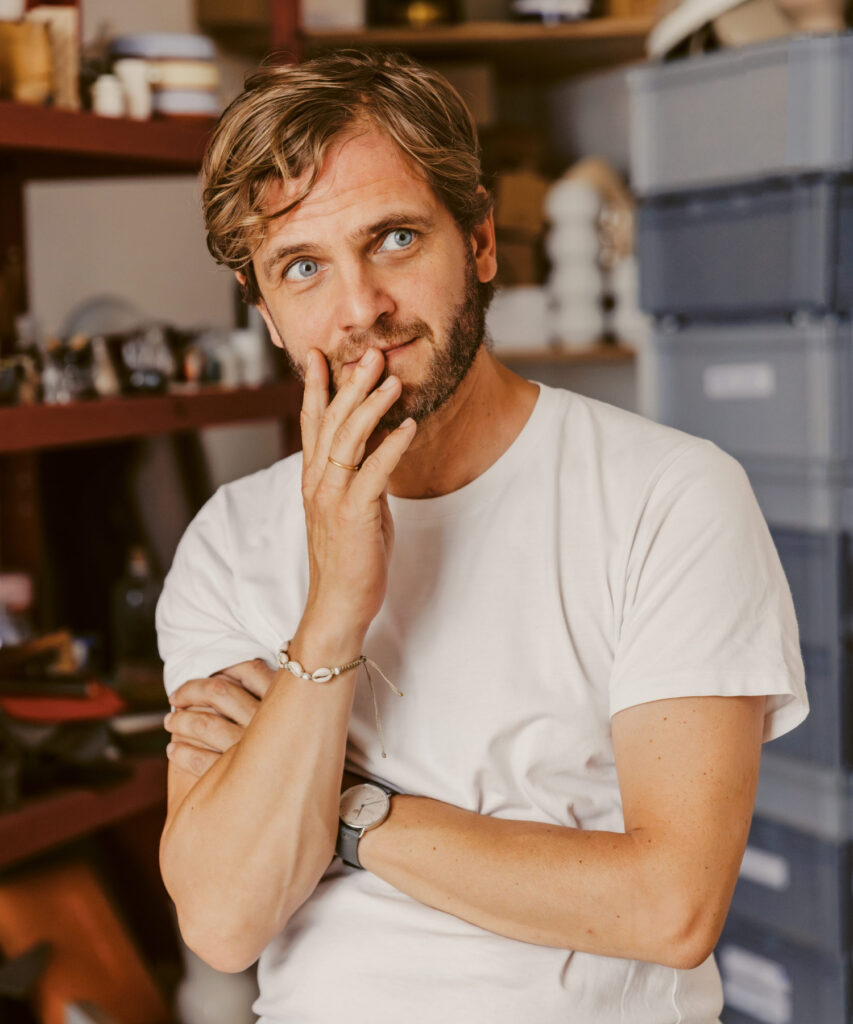
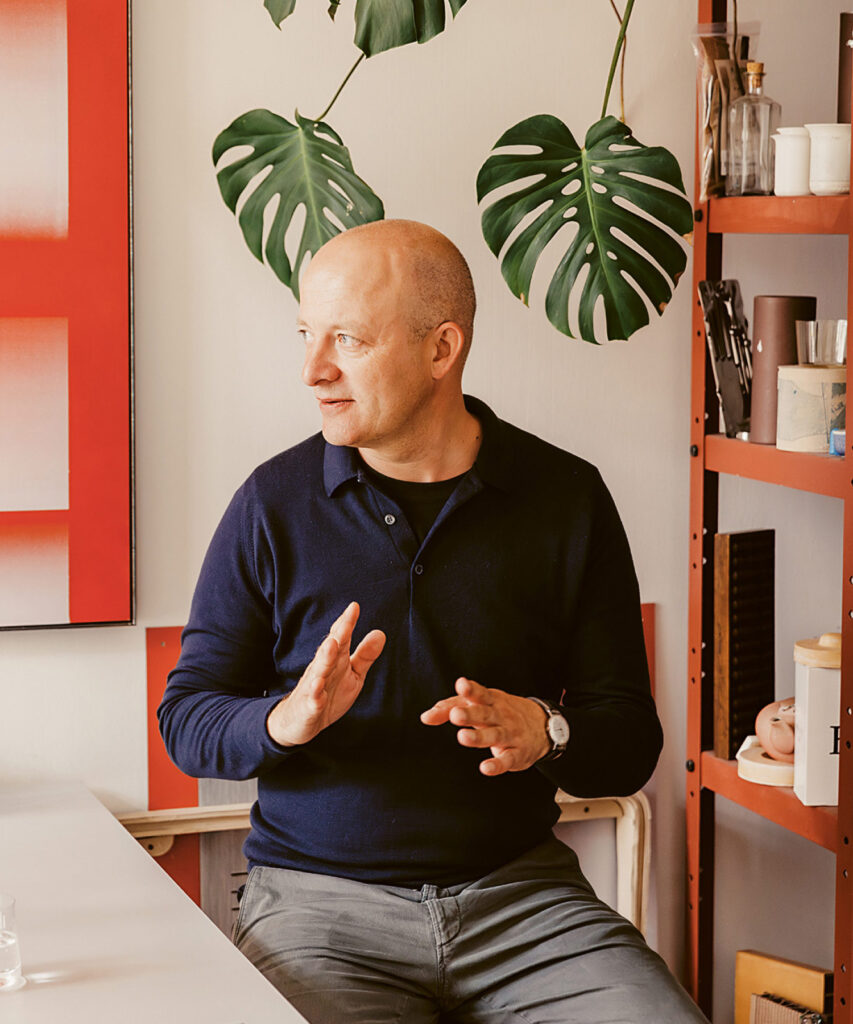
And are aesthetics and beauty still important?
AM: Of course, we’re sensual beings at the end of the day!
MB: Yes, we all want to feel good. And the emotional component in design has a lot to do with how the aesthetics work.
Mark, you also teach design at the Hochschule der Bildenden Künste Saar. What’s your main priority as a lecturer?
MB: Staying curious! I want to teach my students that being a designer is a responsible profession. You’re not just there to make things pretty, but you make an important contribution to society. Design is a powerful tool that translates sustainability, function and identity into products and systems that can help bring about positive change in society, using various methods and techniques that we teach at the HBKsaar.
Andreas, what expectations do you have for your collection? What does it need to achieve from a design perspective?
It has to reflect what Mühle stands for – value, quality, durability, sustainability. Ideally, the design language should be consistent. That’s a tall order, because development just keeps on going. So there are definitely products that we would have developed differently from today’s perspective. But they were justified when we made them and have also shaped the brand to a certain extent.
The Hexagon shaving set designed by you, Mark, was launched in 2017. You mentioned locatability as an important criterion for you. To what extent is the series situated at Mühle in the Ore Mountains?
Very specifically, of course, with the coordinates engraved on the handle. In addition, the archetypal shape of the hexagon is an age-old shape for tool handles that’s a nod to the tradition of tool-making in the region around Stützengrün.
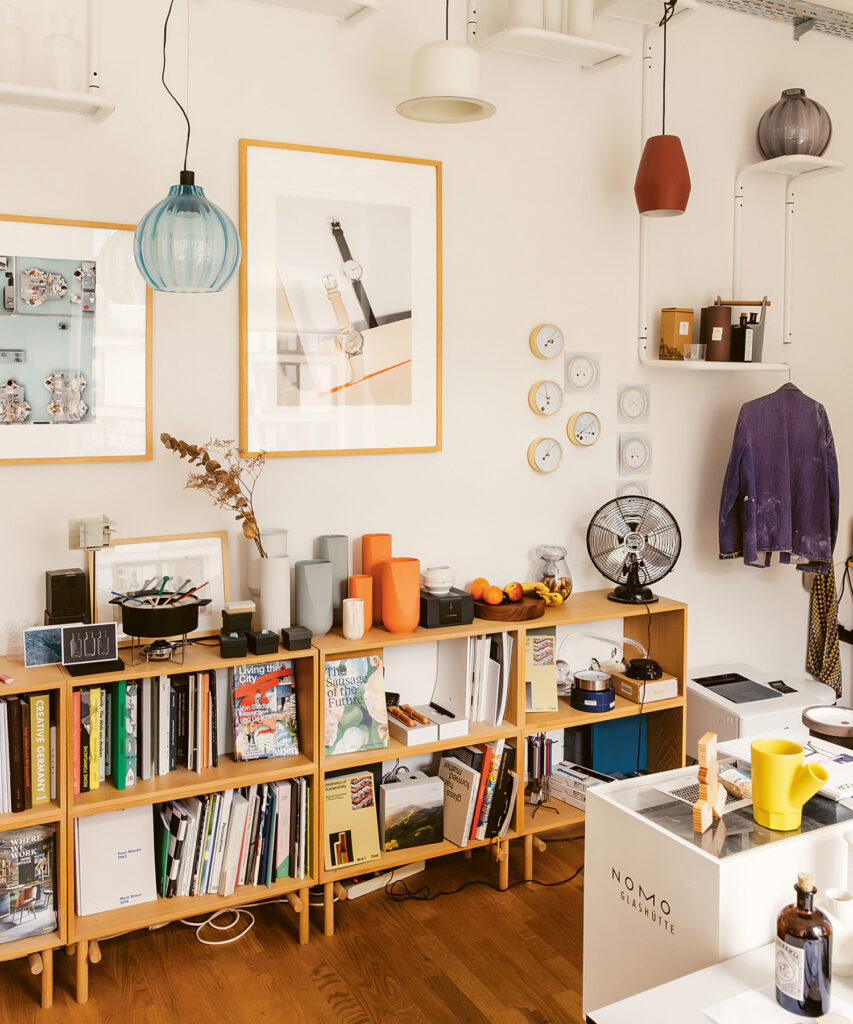
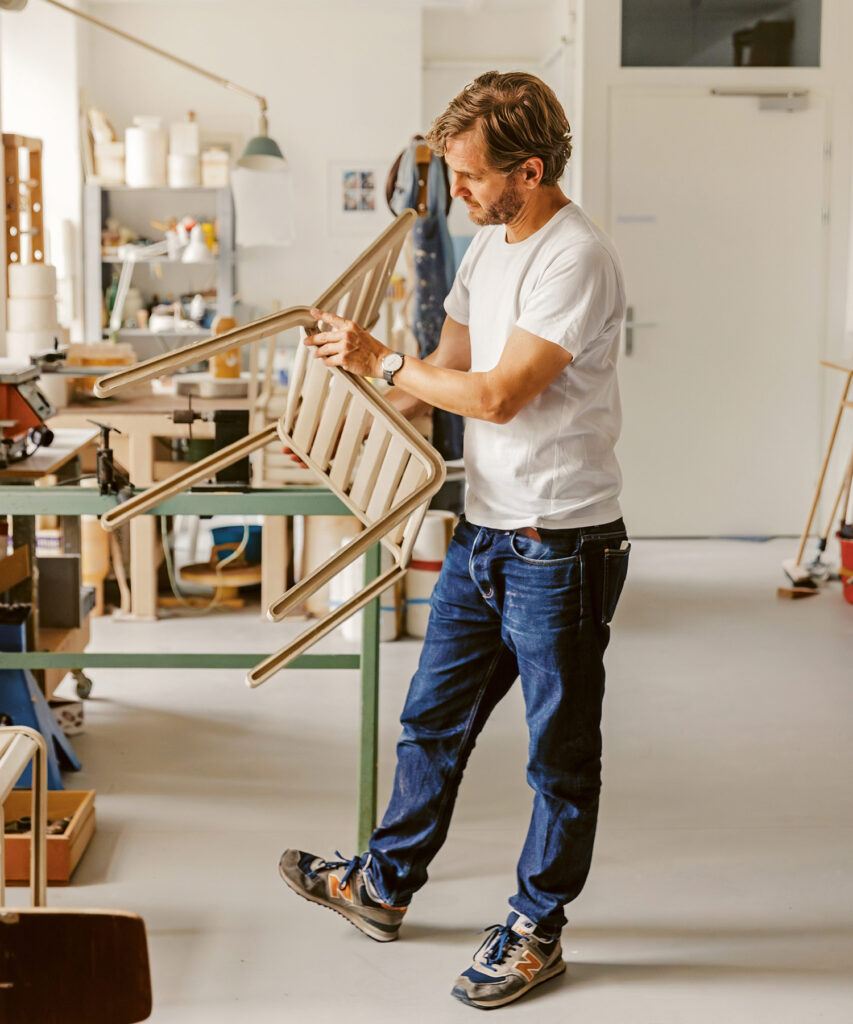
You’re currently working on a second joint series, which is scheduled to be released in 2024. Can you tell us a bit about your collaborative partnership? Are there areas where there are bound to be discrepancies between designers and manufacturers?
MB: You often quibble a bit over the final selling price, of course. That’s where you’ve got a lot to learn as a designer – especially at the beginning of your career. Nobody wants to make products that sit on shelves gathering dust. My customers have to sell their goods. Products have to be commercially successful. We’re all in the same boat in that respect, but pricing is usually a process.
Does it inhibit creativity to think your way into production processes and bear limitations in mind?
MB: We’re always well advised not to pay too much attention either to the price or final production when brainstorming ideas, and only consider how to make something happen once the ideas have been collected.
The aesthetic of the barbershop world is generally quite nostalgic, deliberately playing with old-fashioned shapes and images. Mühle, with its clean, clear language, seems like a counter design. Is this a deliberate design decision?
AM: The MÜHLE aesthetic predated this revival of the barbershop scene, which only really began to take off in 2010. We decided back then not to take our lead from this revival. So there are some Mühle products that suit these barbershop settings, but the majority certainly don’t.
Why do you constantly need new designs anyway? You’d have thought there’s enough choice for all products – whether you’re talking about sweaters, cutlery, chairs or indeed razors.
AM: When my brother and I took over the management, we aimed to launch completely new collections every year. It was quite crazy, actually. At some point, we realised that this is not only incredibly exhausting for retailers, but also for the development process. You can’t get a completely new, good product off the ground within the space of a year. So we rethought our approach. Our aim now is to establish classics that we can gradually enhance, playing with colours and materials.
So it’s not better per se to constantly offer new products?
AM: Absolutely not! We tend to ask ourselves where there are gaps in our portfolio. Which material do we not yet have in our range, and which product would suit us?
And which gap are you closing with your new collaboration?
AM: A material gap. In the new series with Mark, we’re working with glass for the first time.
MB: And it’s going to be much more colourful than what you’ve seen from MÜHLE before. We’re going to reinterpret the old-fashioned quality that’s always associated with glass with emotional colour compositions and strict geometry. MÜHLE has never done that before.
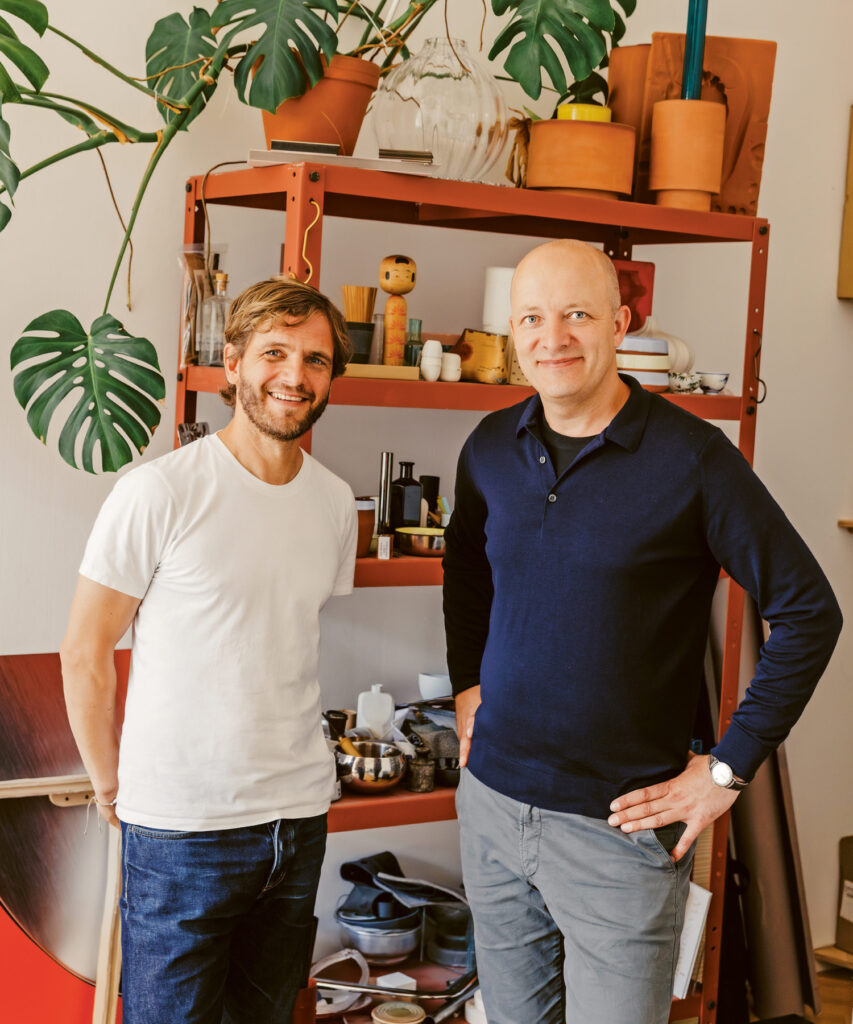
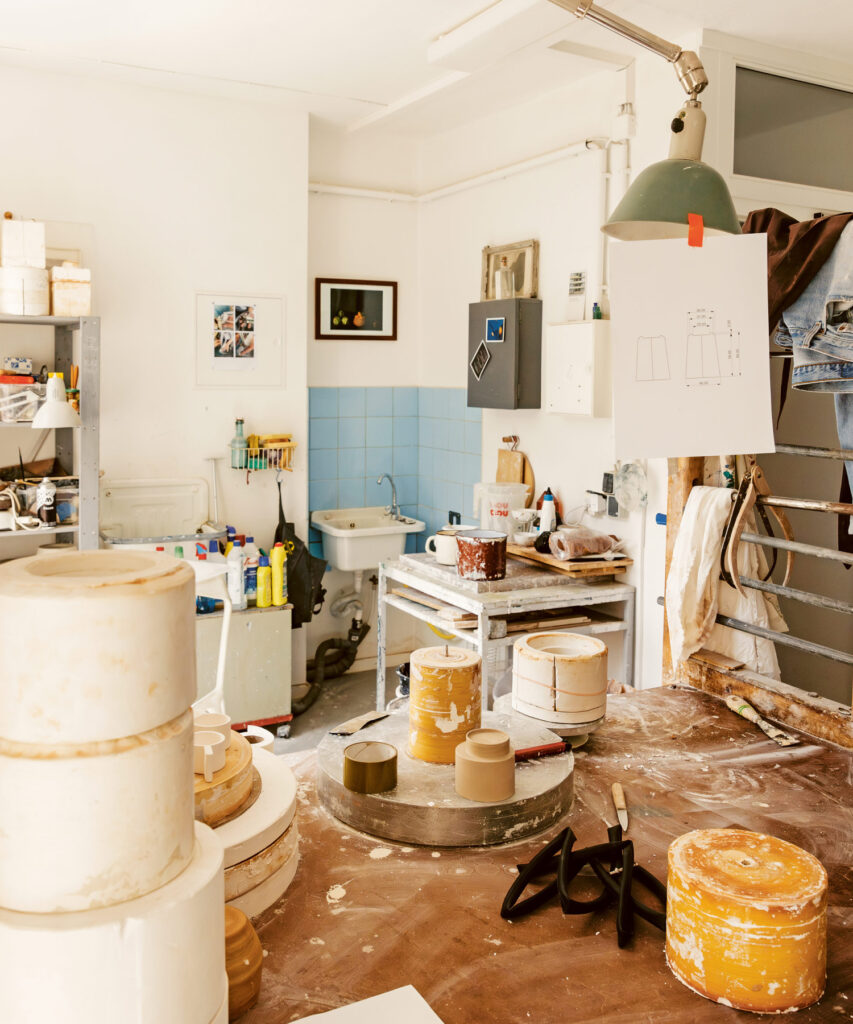
What form does your love of design take in your private life?
AM: There are criteria for everything I buy. When I see something I like, I stop and think about it. Do I really need it? Will this product change my house? Do we have space for it? Impulse buys aren’t really my thing. My work in the garden is all about my penchant for the archaic. The other day, at the Lorenzi knives and tools store in Vienna, which I simply love, I happened upon a pair of garden shears from Japan, a very special, original design, made of carbon steel – I didn’t really need them, but I’m glad to have them.
MB: I use my own products – not to show off, but because I need to see how they work in everyday life, how they develop over time. And I like to fix things that become more personal in the process. We’ve got have a dacha, for example, a typical GDR building, which I was able to completely renovate and put personal touches to. But I like it when diversity emerges from what’s already there and what’s my own. As far as new designs go, I’m a fan of Stefan Diez. His designs are well thought through and well designed in the best sense of the word!